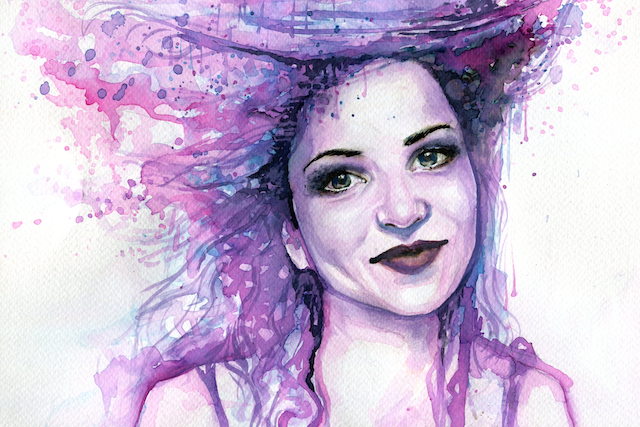When the clouds gather, they often bring more than just rain. For millions worldwide, the experience of mental health challenges can feel similarly overwhelming, particularly when depression and anxiety often manifest together. These two common conditions, while distinct, share a complex relationship, frequently occurring simultaneously and exacerbating each other's symptoms. In fact, studies suggest that a significant percentage—between 20% and 40%—of individuals diagnosed with either depression or anxiety will experience both conditions concurrently (Eysenck & Fajkowska, 2018).
The goal of this comprehensive guide is to illuminate why depression and anxiety often intertwine, how their symptoms can create a challenging cycle, and, most importantly, to equip you with proven strategies to effectively cope with both. By understanding this intricate relationship, you can begin to develop a robust toolkit for managing symptoms, fostering resilience, and improving your overall well-being.
Table of Contents
- Understanding the Overlap: Why Depression and Anxiety Often Co-Exist
- Recognizing the Intertwined Symptoms
- Navigating Daily Life with Co-occurring Conditions
- Proven Strategies for Coping with Both
- Therapeutic Approaches: CBT and Beyond
- Lifestyle Adjustments: Building Your Resilience
- The Importance of Open Communication and Support
Key Takeaways
- Depression and anxiety often co-occur, creating a feedback loop where symptoms intensify each other.
- A holistic coping approach involves therapy, lifestyle adjustments, and potentially medication.
- Connecting with trusted individuals or support networks is a vital first step to reduce isolation.
1. Understanding the Overlap: Why Depression and Anxiety Often Co-Exist
Why do depression and anxiety often overlap? Depression and anxiety frequently overlap due to shared neurological pathways, particularly in the brain's amygdala, which is central to processing emotions like fear and stress. This common origin contributes to their cyclical nature, where the symptoms of one condition can trigger or worsen the other, creating a challenging feedback loop for individuals.
The close relationship between depression and anxiety is rooted in our fundamental biology. Gin Lalli, a solutions-focused therapist, highlights that both conditions originate from the amygdala, the brain region responsible for our primitive "fight, flight, or freeze" response. This evolutionary survival mechanism, while crucial for our ancestors facing immediate physical threats, often misfires in modern life. As Lalli explains, "Fight now becomes anger, flight is anxiety, and freeze is depression." This neurobiological connection is a primary reason why depression and anxiety often develop and persist together.
When the brain perceives chronic stress or threat, whether real or imagined, it can activate these ancient responses. Persistent anxiety, with its constant state of hyper-arousal (flight), can eventually deplete mental and physical resources, leading to feelings of hopelessness and stagnation (freeze), which are hallmarks of depression. Conversely, the profound lack of motivation and persistent sadness associated with depression can generate intense worry about the future and inability to cope, fueling anxiety. This intricate interplay makes it challenging for many to differentiate between the two, as their symptoms become deeply intertwined. Understanding this shared biological and psychological foundation is a critical first step in addressing both conditions effectively (Harvard, 2024). The experience isn't merely having two separate conditions, but rather living with a complex, interconnected challenge where anxiety and depression often amplify each other.
2. Recognizing the Intertwined Symptoms
While distinct in their primary emotional impact, depression and anxiety often present with a surprising number of shared symptoms, making diagnosis and self-identification tricky. Recognizing these overlaps, as well as their unique characteristics, is crucial for effective management.
What are the common shared symptoms of depression and anxiety? Common shared symptoms of depression and anxiety include irritability, persistent fatigue, difficulties with sleep (insomnia or hypersomnia), and significant trouble focusing or concentrating. These overlapping manifestations can make it challenging to discern which condition is more dominant at any given time, impacting daily functioning and well-being.
Both conditions can manifest as:
- Irritability: A short temper or feeling easily annoyed.
- Fatigue: Persistent tiredness, even after adequate rest.
- Trouble sleeping: Difficulty falling or staying asleep, or sleeping too much.
- Difficulty focusing: Problems concentrating on tasks or making decisions.
However, Dr. Elena Touroni, a consultant psychologist, clarifies that their emotional core differs. "Depression is more often linked with feelings of hopelessness, sadness, and a loss of interest in activities once enjoyed, whereas anxiety tends to involve worry, restlessness, and a sense of fear or dread about future events." This distinction is vital, yet many individuals experience both sets of symptoms simultaneously, blurring the lines between a depressive episode and a period of heightened anxiety.
Consider Sarah, 26, who describes her experience: "My anxiety makes me constantly worry about my job performance, creating a tight knot in my stomach every morning. But then, that exhaustion from constant worry piles up, and I just want to stay in bed, feeling like I'm failing anyway. It's like my anxiety pushes me to the edge, and my depression is waiting there to catch me." Similarly, Mark, 32, shared, "I’ll have days where I can't stop replaying social interactions, terrified I said the wrong thing – that's my anxiety. But then, the next day, I feel such profound sadness and a lack of interest in everything I usually love, which is my depression kicking in. It's a constant battle for dominance." These personal accounts highlight how the symptoms of depression anxiety often switch roles, making it a dynamic and unpredictable struggle.
3. Navigating Daily Life with Co-occurring Conditions
Living with co-occurring depression and anxiety often complicates even the simplest daily tasks, transforming routine activities into significant hurdles. The combined weight of these conditions can lead to increased exhaustion, overwhelming feelings, and a profound impact on various aspects of life, from work to personal relationships.
In the workplace, for instance, the synergy of depression and anxiety can manifest as extreme procrastination and intense worry about responsibilities. You might find yourself staring at a growing to-do list, feeling utterly overwhelmed by the sheer volume of tasks, yet paralyzed by indecision or a lack of motivation. This mental block can lead to hours spent distracted, feeling guilty, and ultimately falling behind, which then feeds back into both anxiety about deadlines and depressive feelings of inadequacy. As Dr. Touroni explains, "Depression and anxiety can create a vicious cycle. Anxiety often stirs up feelings of worry, stress, and fear about the future, while depression can make you feel hopeless, fatigued, and unmotivated. Together, they can amplify each other—worrying about things that feel out of control (anxiety) can lead to feeling defeated or low (depression)." This cycle can make focusing or planning a workday incredibly difficult.
Beyond professional life, the impact on relationships—romantic, familial, or platonic—can be profound. The tendency to withdraw, a common symptom of depression, combined with the social anxiety that often accompanies anxiety disorders, can create emotional distance between you and loved ones. This withdrawal can lead to misunderstandings, further isolating you and deepening feelings of loneliness. Irritability, another shared symptom, can also strain relationships, making it challenging to maintain healthy connections. Dr. Touroni notes, "Both conditions can create a sense of self-doubt and a feeling of being 'too much' for others, which often isolates people further." Recognizing this interconnectedness is key, as managing one aspect of the combined challenge can often begin to alleviate the symptoms of the other. The constant battle with depression anxiety often leaves individuals feeling drained and misunderstood, making proactive self-care and communication even more vital.
4. Proven Strategies for Coping with Both
When depression and anxiety often appear together, managing them requires a multifaceted and personalized approach. There isn't a one-size-fits-all solution, but rather a "toolkit" of strategies that individuals can explore and adapt to their unique experiences. The prerequisite for effective coping is acknowledging the presence of both conditions and committing to exploring different methods to alleviate their impact.
Dr. Touroni advocates for developing your own unique 'toolkit' of coping mechanisms. This toolkit might comprise a blend of professional therapy, strategic lifestyle modifications, and, for some, medication. The journey involves experimenting with various techniques to discover what resonates most with your personal needs and circumstances. It's about finding sustainable practices that empower you to navigate the complexities of co-occurring conditions. The key is to be patient with yourself and celebrate small victories, recognizing that progress is not always linear.
The challenge of depression anxiety often demands a comprehensive strategy. For example, techniques that reduce the immediate intensity of anxious thoughts can prevent them from spiraling into depressive hopelessness. Conversely, addressing the underlying causes of depression can reduce the vulnerability to anxiety attacks. This integrated approach acknowledges that while the symptoms may feel overwhelming, there are actionable steps that can be taken to regain a sense of control and improve daily functioning. The following sections will delve into specific components of this coping toolkit, offering practical insights and expert recommendations to guide you on your path to greater well-being.
5. Therapeutic Approaches: CBT and Beyond
When depression and anxiety often coexist, professional support becomes an invaluable resource for navigating the complex interplay of symptoms. Therapy offers a structured environment to understand, process, and develop strategies for managing both conditions holistically.
What types of therapy are effective for co-occurring depression and anxiety? Cognitive Behavioral Therapy (CBT) is highly effective for co-occurring depression and anxiety because it directly addresses negative thought patterns and helps individuals develop healthier coping mechanisms for overwhelming emotions. Other beneficial approaches include mindfulness-based therapies and psychodynamic therapy, which explore underlying causes.
Dr. Touroni frequently recommends Cognitive Behavioral Therapy (CBT) to her clients. CBT is particularly effective because it directly targets both anxiety and depression by helping individuals identify, challenge, and reframe negative thought patterns and behaviors. By learning to manage overwhelming emotions and develop more constructive responses, clients can significantly reduce the impact of both conditions. For instance, an anxious thought about a future event can be reframed, preventing it from spiraling into a depressive conviction of inevitable failure.
Sham Singh, MD, a psychiatrist, emphasizes a comprehensive approach that delves into underlying causes. "In dealing with anxiety and depression, I look at their underlying causes, which might be emotional or environmental, but at times even biological. This comprehensive approach will help not only in relieving symptoms, but also in preventing their recurrence." Dr. Singh highlights the importance of starting with mindfulness and grounding techniques. These practices help individuals decrease the immediacy of stressors, providing a crucial pause before anxious or depressive thoughts escalate. While anxiety might benefit from reframing techniques, depression often requires encouragement for small, actionable steps that build momentum and motivation.
Medication can also be a vital component of a comprehensive treatment plan, though individual responses vary significantly. For example, while Elisha, 28, found that sertraline exacerbated her depression, Lee, 25, found significant relief from depression symptoms with venlafaxine, which in turn had a positive "knock-on effect" on her anxiety. This underscores the personalized nature of medication management and the need for close collaboration with a healthcare professional to find the right fit. The goal is to find a balance that addresses the specific ways depression anxiety often manifests in an individual's life.
6. Lifestyle Adjustments: Building Your Resilience
Beyond formal therapy, a range of practical lifestyle adjustments can significantly contribute to managing symptoms when depression and anxiety often overlap. These strategies empower individuals to build daily resilience and foster a greater sense of control over their emotional landscape.
What lifestyle changes can help manage depression and anxiety? Lifestyle changes that effectively manage depression and anxiety include practicing mindfulness and grounding to stay present, setting small achievable goals to build momentum, engaging in regular physical activity to boost mood, cultivating hope, and establishing consistent routines for predictability and stability.
Mindfulness and Grounding: Dr. Touroni describes these as "incredibly helpful" for anxiety. By focusing on the present moment—your breath, the sensations in your body, or the sounds around you—you can interrupt the cycle of worry and prevent your mind from spiraling into future-oriented fears or past-oriented regrets. Regular practice can enhance emotional regulation and reduce reactivity to stressors.
Setting Achievable Goals: For depression, the weight of overwhelming tasks can be debilitating. Dr. Touroni recommends breaking down larger objectives into small, manageable steps. Celebrate each minor accomplishment, no matter how insignificant it seems. This process builds a sense of efficacy and gently counteracts feelings of hopelessness, gradually rekindling motivation.
Movement and Physical Activity: Even a short walk can make a difference. Physical activity is a powerful mood booster, releasing endorphins that can alleviate depressive symptoms and reduce the physiological arousal associated with anxiety. Incorporate gentle movement into your day, even when motivation is low, and gradually increase intensity as you feel able.
Finding Hope: For Tom, 28, actively seeking a "sense of hope" is crucial. This might involve engaging in exciting new projects, spending quality time with supportive friends, achieving a productive task like a swim or run, or even successful dating experiences. While some depression relievers might temporarily amplify anxiety, the overall pursuit of hope helps combat the pervasive feelings of despair.
Establishing Routines: Morgan, 25, thrives on routines. "I thrive on keeping routines, making set times to do things I love, and giving myself plenty of grace," she shares. She also strategically tackles one thing her depression wants her to avoid each day, like cleaning her room, to prevent anxiety from taking hold. Lee, 25, also finds routines helpful for her anxiety, noting, "There’s less chance of getting anxious if I know what's going to happen; but on the flip side, it makes it worse if something unexpected happens." Consistent routines provide a sense of predictability and structure, which can be incredibly soothing when depression and anxiety often create chaos within.
7. The Importance of Open Communication and Support
Navigating the complexities of co-occurring depression and anxiety often feels like a solitary battle. However, reaching out and communicating with others is a critical step toward healing and reducing feelings of isolation. While challenging, the benefits of seeking and accepting support are immense.
Talking about mental health isn't always easy. Elisha, 28, notes, "I try to talk to my loved ones up front about how I’m feeling, but it doesn’t always land well." She finds speaking to those who have shared similar experiences most helpful, as they can truly empathize. Lee, 25, admits, "I'll be the first person to say I'm bad at talking to people about it. I try and pretend everything is fine until I'm literally breaking down, and then it'll all come out at once." She describes her mind as "very loud," struggling to articulate the internal noise. The difficulty lies in explaining the mental paradox: "It's hard to explain how I'm struggling with my anxiety to the point I can't leave the house, but staying in the house is making my depression worse. If someone hasn't experienced that exact situation, it'll be hard for them to understand exactly the mental battle I'm fighting."
Despite these challenges, open communication can transform your experience. Morgan, an educator, adopts a straightforward approach: "I’m pretty open and honest about it... I have no shame when it comes to admitting I’m struggling." She makes people aware of her anxiety, especially given the possibility of anxiety attacks, and informs them when she's having a particularly hard time. This proactive communication sets expectations and fosters understanding.
If you decide to talk to loved ones, choose a calm moment and express your feelings honestly. You might be pleasantly surprised by their understanding and willingness to help. For those who internalize societal pressures, particularly men, to be "strong" and not discuss feelings, reaching out can feel like a monumental hurdle. However, breaking this silence is often the first step toward finding relief. If direct conversations with personal connections feel too daunting, online support groups or mental health forums can offer a safe space to connect with others facing similar struggles, providing validation and practical advice.
Dr. Touroni emphasizes, "Most importantly, seeking support—whether through therapy, support groups, or talking to loved ones—is key to not feeling isolated in this struggle." Dr. Singh encourages patience, reminding clients that "any progress is great." Combined with therapy and self-care routines like regular exercise and sleep, sustained effort in communication and support-seeking can lead to significant recovery and improved well-being, even when depression anxiety often feel overwhelming.
Get Help Now
If you or someone you know is struggling with depression and anxiety, please reach out for professional support. Many online therapy platforms, like Talkspace, BetterHelp, and ReGain, offer accessible and confidential care. Finding the right support system is a crucial step towards managing these conditions and improving your quality of life.
Sources
- Eysenck M, Fajkowska M. Anxiety and depression: toward overlapping and distinctive features. Cognition and Emotion. 2018;32(7):1391-1400. doi:10.1080/02699931.2017.1330255
- Levine J, Cole D, Chengappa K, Gershon S. Anxiety disorders and major depression, together or apart. Depress Anxiety. 2001;14(2):94-104. doi:10.1002/da.1051
- Adams G, Balbuena L, Meng X, Asmundson G. When social anxiety and depression go together: A population study of comorbidity and associated consequences. J Affect Disord. 2016;206:48-54. doi:10.1016/j.jad.2016.07.031





